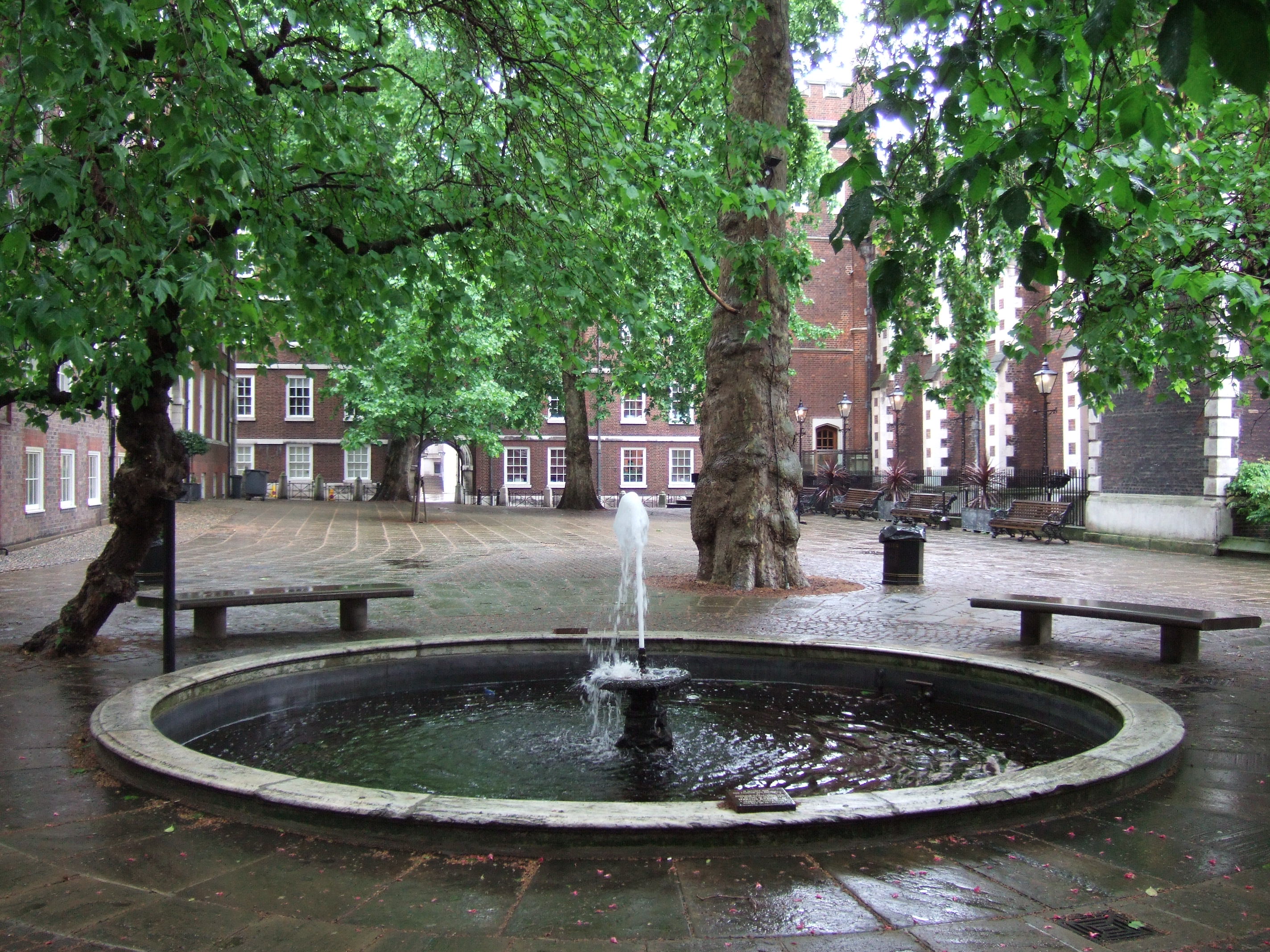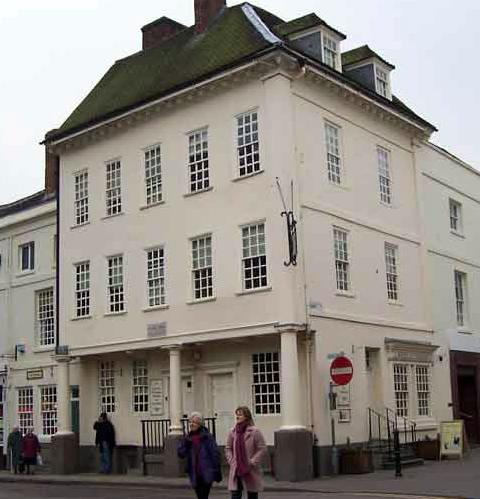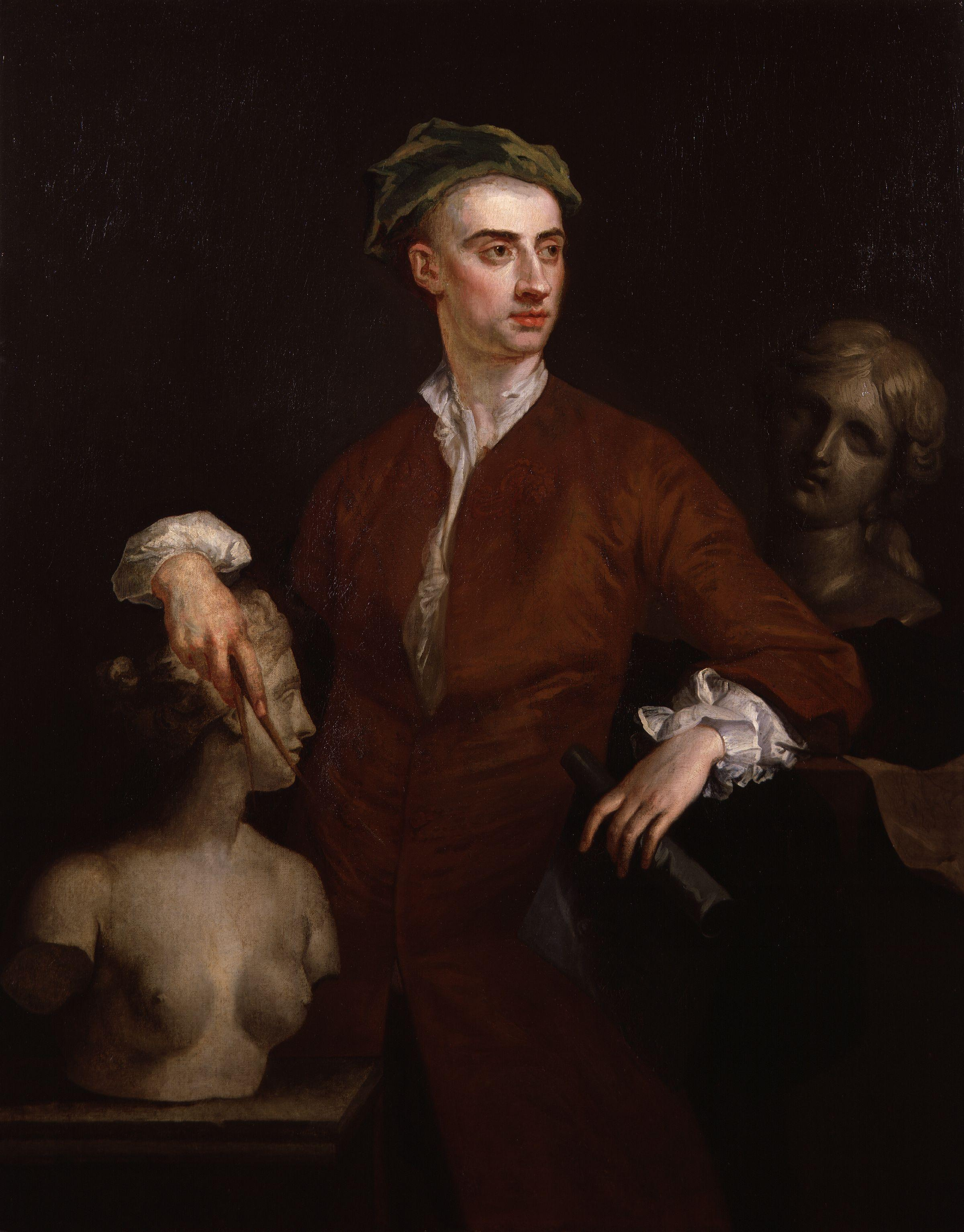|
Nicholas Rowe (writer)
Nicholas Rowe (; 20 June 1674 – 6 December 1718), English dramatist, poet and miscellaneous writer, was appointed Poet Laureate in 1715. His plays and poems were well-received during his lifetime, with one of his translations described as one of the greatest productions in English poetry. He was also considered the first editor of the works of William Shakespeare. Life Nicholas Rowe was born in Little Barford, Bedfordshire, England, son of John Rowe (d. 1692), barrister and sergeant-at-law, and Elizabeth, daughter of Jasper Edwards, on 20 June 1674. His family possessed a considerable estate at Lamerton in Devonshire. His father practised law and published Benlow's and Dallison's Reports during the reign of King James II. The future Poet Laureate was educated first at Highgate School, and then at Westminster School under the guidance of Richard Busby. In 1688, Rowe became a King's Scholar, which was followed by his entrance into Middle Temple in 1691. His entrance into Midd ... [...More Info...] [...Related Items...] OR: [Wikipedia] [Google] [Baidu] |
Poet Laureate Of The United Kingdom
The British Poet Laureate is an honorary position appointed by the monarch of the United Kingdom, currently on the advice of the prime minister. The role does not entail any specific duties, but there is an expectation that the holder will write verse for significant national occasions. The origins of the laureateship date back to 1616 when a pension was provided to Ben Jonson, but the first official holder of the position was John Dryden, appointed in 1668 by Charles II. On the death of Alfred, Lord Tennyson, who held the post between November 1850 and October 1892, there was a break of four years as a mark of respect; Tennyson's laureate poems "Ode on the Death of the Duke of Wellington" and "The Charge of the Light Brigade" were particularly cherished by the Victorian public. Three poets, Thomas Gray, Samuel Rogers and Walter Scott, turned down the laureateship. The holder of the position as at October 2022 is Simon Armitage who succeeded Carol Ann Duffy in May 2019. Backgr ... [...More Info...] [...Related Items...] OR: [Wikipedia] [Google] [Baidu] |
Middle Temple
The Honourable Society of the Middle Temple, commonly known simply as Middle Temple, is one of the four Inns of Court exclusively entitled to call their members to the English Bar as barristers, the others being the Inner Temple, Gray's Inn and Lincoln's Inn. It is located in the wider Temple area of London, near the Royal Courts of Justice, and within the City of London. History During the 12th and early 13th centuries the law was taught, in the City of London, primarily by the clergy. But a papal bull in 1218 prohibited the clergy from practising in the secular courts (where the English common law system operated, as opposed to the Roman civil law favoured by the Church). As a result, law began to be practised and taught by laymen instead of by clerics. To protect their schools from competition, first Henry II and later Henry III issued proclamations prohibiting the teaching of the civil law within the City of London. The common law lawyers migrated to the hamlet of H ... [...More Info...] [...Related Items...] OR: [Wikipedia] [Google] [Baidu] |
Timur
Timur ; chg, ''Aqsaq Temür'', 'Timur the Lame') or as ''Sahib-i-Qiran'' ( 'Lord of the Auspicious Conjunction'), his epithet. ( chg, ''Temür'', 'Iron'; 9 April 133617–19 February 1405), later Timūr Gurkānī ( chg, ''Temür Küregen''), was a Turco-Mongol conqueror who founded the Timurid Empire in and around modern-day Afghanistan, Iran, and Central Asia, becoming the first ruler of the Timurid dynasty. An undefeated commander, he is widely regarded as one of the greatest military leaders and tacticians in history, as well as one of the most brutal. Timur is also considered a great patron of art and architecture as he interacted with intellectuals such as Ibn Khaldun, Hafez, and Hafiz-i Abru and his reign introduced the Timurid Renaissance. Born into the Barlas confederation in Transoxiana (in modern-day Uzbekistan) on 9 April 1336, Timur gained control of the western Chagatai Khanate by 1370. From that base, he led military campaigns across Western, South, and ... [...More Info...] [...Related Items...] OR: [Wikipedia] [Google] [Baidu] |
Tamerlane (play)
''Tamerlane'' is a 1701 history play by the English writer Nicholas Rowe. A tragedy, it portrays the life of the Timur, the fourteenth century conqueror and founder of the Timurid Empire. Rowe, a staunch Whig, used the historical story as an allegory for the life of William III who resembles his portrayal of Tamerlane while his opponent the Ottoman leader Bayezid I was equivalent to William's longstanding opponent Louis XIV of France. An earlier version of the story ''Tamburlaine'' was written by Christopher Marlowe during the Elizabethan era with a very different focus in the context of the English Renaissance. It was first performed in December 1701 at the Lincoln's Inn Fields Theatre in London, one of the two patent theatres of the era, and was published the following year by Jacob Tonson. The original cast included Thomas Betterton as Tamerlane, John Verbruggen as Bajazet, Barton Booth as Axalla, William Powell as Moneses, George Pack as Stratocles, William Fieldhouse as ... [...More Info...] [...Related Items...] OR: [Wikipedia] [Google] [Baidu] |
Persepolis
, native_name_lang = , alternate_name = , image = Gate of All Nations, Persepolis.jpg , image_size = , alt = , caption = Ruins of the Gate of All Nations, Persepolis. , map = , map_type = Iran#West Asia , map_alt = , map_caption = , map_size = , altitude_m = , altitude_ref = , relief = yes , coordinates = , map_dot_label = , location = Marvdasht, Fars Province, Iran , region = , type = Settlement , part_of = , length = , width = , area = , volume = , diameter = , circumference = , height = , builder = , and , material = Limestone, mud-brick, cedar wood , built = 6th century BC , abandoned = , epochs = Achaemenid Empire , cultures = Persian , dependency_of = , occupants = , event = * Battle of the Pe ... [...More Info...] [...Related Items...] OR: [Wikipedia] [Google] [Baidu] |
Thomas Betterton
Thomas Patrick Betterton (August 1635 – 28 April 1710), the leading male actor and theatre manager during Restoration England, son of an under-cook to King Charles I, was born in London. Apprentice and actor Betterton was born in August 1635 in Tothill Street, Westminster.''The National Cyclopaedia of Useful Knowledge'', Vol.III, London, Charles Knight, 1847, p.273 He was apprenticed to John Holden, Sir William Davenant's publisher, and possibly later to a bookseller named John Rhodes, who had been wardrobe-keeper at the Blackfriars Theatre. In 1659, Rhodes obtained a license to set up a company of players at the Cockpit Theatre in Drury Lane; and on the reopening of this theatre in 1660, Betterton made his first appearance on the stage. Betterton's talents at once brought him into prominence, and he was given leading parts. On the opening of the new theatre in Lincoln's Inn Fields in 1661, Davenant, the patentee of the Duke's Company, engaged Betterton and all Rhodes's co ... [...More Info...] [...Related Items...] OR: [Wikipedia] [Google] [Baidu] |
The Ambitious Stepmother
''The Ambitious Stepmother'' is a 1700 tragedy by the British writer Nicholas Rowe. It was his debut play. Rowe set his play in Biblical times, but it had strong subtexts of the contemporary questions about the British succession that led to the Act of Settlement in 1701.Engel & McGirr p.122 At the court of Persia, Amestris schemes against her stepson Artaxerses. The original cast included John Verbruggen as Artaxerses, Barton Booth as Artaban, Thomas Betterton as Memnon, John Bowman as Magas, George Pack as Cleanthes, Elizabeth Barry as Artemisa, Elizabeth Bowman Elizabeth Bowman (c. 1677 – 1707) was an English stage actor of the seventeenth and early eighteenth century.Caines p.149 The daughter of Sir Francis Watson, 1st Baronet she was adopted by the actor manager Thomas Betterton. In 1692 she married ... as Cleone and Anne Bracegirdle as Amestris. References Bibliography * Burling, William J. ''A Checklist of New Plays and Entertainments on the London Stage, 170 ... [...More Info...] [...Related Items...] OR: [Wikipedia] [Google] [Baidu] |
Samuel Lysons
Samuel Lysons (1763 – June 1819) was an English antiquarian and engraver who, together with his elder brother Daniel Lysons (1762–1834), published several works on antiquarian topics. He was one of the first archaeologists to investigate Roman sites in Britain, and specialised in the study of mosaics. Origins He was born at Rodmarton near Cirencester, Gloucestershire, the younger son of the Reverend Samuel Lysons (1730–1804) by his wife Mary Peach of Rodmarton. His elder brother was Daniel Lysons (1762–1834), his collaborator in much of his work. Career In November 1786, Lysons was elected a fellow of the Society of Antiquaries. He studied law at Bath in Somerset and was called to the Bar at the Inner Temple in 1798. Having chosen the Oxford Circuit, he practised law until December 1803. He served as director of the Society of Antiquaries of London from 1798 to 1809. He was elected a Fellow of the Royal Society in 1797 and later served as vice-president and treasur ... [...More Info...] [...Related Items...] OR: [Wikipedia] [Google] [Baidu] |
Daniel Lysons (antiquarian)
Daniel Lysons (1762–1834) was an English antiquarian and topographer, who published, amongst other works, the four-volume ''Environs of London'' (1792–96). He collaborated on several works with his antiquarian younger brother Samuel Lysons (1763–1819). Life The son of the Reverend Samuel Lysons (1730–1804) and Mary Peach Lysons of Rodmarton, Gloucestershire, Lysons studied at Bath Grammar School and St Mary Hall, Oxford, graduating MA in 1785, and followed in his father's footsteps to become a curate in Putney, west London from 1789 to 1800. While at Putney, Lysons began his survey of the area around London, in which he was encouraged by Horace Walpole, who appointed him as his chaplain. In 1800, he inherited the family estates at Hempsted, near Gloucester, from his uncle Daniel Lysons (1727–1800), and the following year married Sarah Hardy (c.1780–1808), with whom he had a son, Samuel. In 1813, he married Josepha Catherine Susanna Cooper (c.1781–1868). His daugh ... [...More Info...] [...Related Items...] OR: [Wikipedia] [Google] [Baidu] |
Samuel Johnson
Samuel Johnson (18 September 1709 – 13 December 1784), often called Dr Johnson, was an English writer who made lasting contributions as a poet, playwright, essayist, moralist, critic, biographer, editor and lexicographer. The ''Oxford Dictionary of National Biography'' calls him "arguably the most distinguished man of letters in English history". Born in Lichfield, Staffordshire, he attended Pembroke College, Oxford until lack of funds forced him to leave. After working as a teacher, he moved to London and began writing for ''The Gentleman's Magazine''. Early works include ''Life of Mr Richard Savage'', the poems ''London'' and ''The Vanity of Human Wishes'' and the play ''Irene''. After nine years' effort, Johnson's '' A Dictionary of the English Language'' appeared in 1755, and was acclaimed as "one of the greatest single achievements of scholarship". Later work included essays, an annotated ''The Plays of William Shakespeare'', and the apologue ''The History of R ... [...More Info...] [...Related Items...] OR: [Wikipedia] [Google] [Baidu] |
Lucan
Marcus Annaeus Lucanus (3 November 39 AD – 30 April 65 AD), better known in English as Lucan (), was a Roman poet, born in Corduba (modern-day Córdoba), in Hispania Baetica. He is regarded as one of the outstanding figures of the Imperial Latin period, known in particular for his epic ''Pharsalia''. His youth and speed of composition set him apart from other poets. Life Three brief ancient accounts allow for the reconstruction of a modest biography – the earliest attributed to Suetonius, another to an otherwise unknown Vacca, and the third anonymous and undated – along with references in Martial, Cassius Dio, Tacitus's ''Annals'', and one of Statius's ''Silvae''. Lucan was the son of Marcus Annaeus Mela and grandson of Seneca the Elder; he grew up under the tutelage of his uncle Seneca the Younger. Born into a wealthy family, he studied rhetoric at Athens and was probably provided with a philosophical and Stoic education by his uncle. His wife was Polla Argentaria, ... [...More Info...] [...Related Items...] OR: [Wikipedia] [Google] [Baidu] |
John Michael Rysbrack
Johannes Michel or John Michael Rysbrack, original name Jan Michiel Rijsbrack, often referred to simply as Michael Rysbrack (24 June 1694 – 8 January 1770), was an 18th-century Flemish sculptor, who spent most of his career in England where he was one of the foremost sculptors of monuments, architectural decorations and portraits in the first half of the 18th century. His style combined the Flemish Baroque with Classical influences. He operated an important workshop whose output left an important imprint on the practice of sculpture in England.Robert Williams and Katharine Eustace, ''Rysbrack family [Rysbraeck ' at Grove Art Online Accessed 25 March 2021 Family background and early life Rysbrack was born on 24 June 1694 in |
_Arms.png)






%2C_Topographer_and_Rector_of_Rodmarton.jpg)


